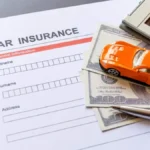Navigating the world of vehicle coverage can be a daunting task, especially with the multitude of options available to drivers. Whether you’re a first-time car owner or someone looking to switch providers, understanding the different coverage types and what they entail is essential for making an informed decision. This guide will walk you through the various vehicle coverage options, their benefits, and how to select the right plan for your needs.
1. Understanding the Basics of Vehicle Coverage
Vehicle coverage, often referred to as auto insurance or simply car insurance, is designed to protect both you and your vehicle in case of an accident, theft, or other unexpected incidents. It typically includes a range of policies that cover the cost of damages to your vehicle, third-party injuries, and even personal medical expenses depending on the type of coverage you choose.
The core components of vehicle coverage generally include:
- Liability Coverage: This is the most basic form of coverage, required by law in most areas. It covers the costs if you’re at fault in an accident, including damages to other vehicles or injuries to other people.
- Collision Coverage: This helps pay for damage to your own vehicle if you’re involved in a crash, regardless of who is at fault.
- Comprehensive Coverage: This covers non-collision events such as theft, vandalism, or natural disasters like floods or hailstorms.
2. Types of Vehicle Coverage
There are several types of coverage available, each offering varying degrees of protection. Understanding these different policies is crucial when choosing the right coverage for your situation.
- Liability Insurance:
Liability insurance is mandatory in most regions. It covers the costs related to injuries or property damage you cause to others in an accident. It typically includes two parts:- Bodily Injury Liability: Covers medical expenses for people injured in an accident caused by you.
- Property Damage Liability: Pays for repairs or replacement of property you damage in an accident.
- Collision Insurance:
If your car is damaged in a collision, whether you’re at fault or not, collision insurance can help cover the repair or replacement costs of your vehicle. It’s especially useful if your car is expensive or if you’re financing your vehicle. - Comprehensive Insurance:
Comprehensive coverage is designed to cover damage to your vehicle not caused by a collision, such as fire, theft, falling objects, or vandalism. This coverage can give you peace of mind that you’ll be protected in the event of a non-collision incident. - Uninsured/Underinsured Motorist Coverage:
This type of coverage protects you if you’re involved in an accident with a driver who either doesn’t have insurance or doesn’t have enough insurance to cover the damages. - Personal Injury Protection (PIP):
PIP, also known as no-fault insurance, covers medical expenses for you and your passengers, regardless of who is at fault. Some policies also cover lost wages and other expenses resulting from an accident. - Gap Insurance:
If your car is totaled and the insurance payout is less than the amount you owe on your loan or lease, gap insurance can cover the difference. This is particularly helpful if you’re financing or leasing a new car.
3. Factors That Affect Your Vehicle Coverage Costs
Your premiums (the amount you pay for coverage) will depend on a variety of factors, including:
- Your Driving Record: A clean driving record can result in lower premiums, while a history of accidents or traffic violations may lead to higher costs.
- The Type of Vehicle: High-end vehicles or cars that are expensive to repair can increase your premium costs.
- Your Age and Experience: Younger, less experienced drivers typically face higher premiums, while older, more experienced drivers may see lower rates.
- Location: Where you live plays a significant role in determining your premium. Areas with high traffic, crime rates, or weather risks can lead to higher premiums.
- Deductible: Choosing a higher deductible (the amount you pay out of pocket before insurance kicks in) can lower your monthly premium but means you’ll pay more in the event of a claim.
4. How to Choose the Right Vehicle Coverage for You
Selecting the right vehicle coverage depends on several personal factors. Here are a few steps to guide your decision:
- Assess Your Needs: Consider the value of your car, how much you drive, and your risk tolerance. If your vehicle is older and less valuable, you may want to skip comprehensive or collision coverage to save on premiums. If you have a newer car or drive frequently, you might want more extensive coverage.
- Set a Budget: Determine how much you’re willing to spend on vehicle coverage. Make sure your coverage fits within your budget without sacrificing the protection you need.
- Compare Quotes: Insurance rates can vary greatly between providers. It’s essential to shop around and compare quotes to ensure you’re getting the best deal for the coverage you need.
- Review Policy Details: Always read the fine print. Understand the exclusions, limits, and what your policy does and doesn’t cover. Sometimes the cheapest option isn’t the best if it doesn’t provide the protection you need.
5. Tips for Lowering Your Vehicle Coverage Costs
If you’re looking to reduce your vehicle coverage costs without compromising protection, consider the following tips:
- Increase Your Deductible: A higher deductible can reduce your premium costs, but make sure you can afford to pay the deductible in case of a claim.
- Bundle Your Policies: Many insurance companies offer discounts if you bundle your vehicle coverage with other policies, such as home or renters insurance.
- Install Safety Features: Vehicles with advanced safety features, such as anti-theft devices or airbags, may qualify for discounts.
- Maintain a Good Credit Score: In some regions, insurers consider your credit score when calculating premiums, so keeping your credit in good standing can help lower your costs.
Conclusion
Understanding and selecting the right vehicle coverage options is crucial for ensuring that you’re adequately protected on the road. By familiarizing yourself with the different types of coverage, factors that affect premiums, and how to choose the best plan for your needs, you can make informed decisions that balance cost with protection. Always review your policy regularly and adjust your coverage as your circumstances change to ensure you’re always covered in the event of an accident or unforeseen event.


